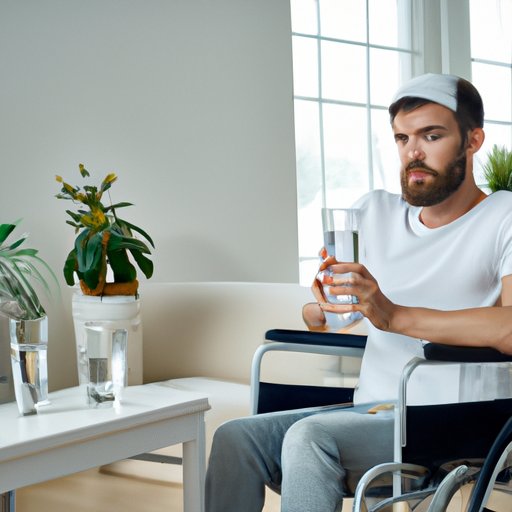Introduction
Caring for an invalid can be a daunting task. An invalid is someone who is unable to look after themselves due to physical or mental illness, disability, or injury. Caring for an invalid requires an understanding of their needs and how to meet them. In this article, we’ll explore how to care for an invalid at home, so that they can be comfortable and safe in their own environment.
Create a Care Plan
The first step in caring for an invalid is to create a tailored care plan. This should outline the individual’s needs and preferences. It should include any medications they’re taking, as well as any other important information such as allergies or dietary requirements. It’s also helpful to list emergency contact information, such as the invalid’s doctor or a close relative.
Prepare the Home Environment
Once you have a care plan in place, it’s time to prepare the home environment for the invalid. Safety should be the top priority, so take steps to minimize the risk of falls or other accidents. If necessary, make adjustments to furniture or living space to accommodate the individual’s disability or illness. Ensure that any medical equipment they need is accessible and in good working order.
Provide Assistance with Personal Hygiene
Personal hygiene is important for both physical and mental wellbeing. Depending on their level of mobility, the invalid may need assistance with bathing, dressing, and grooming. If possible, involve them in the process as much as possible to maintain their independence and dignity.
Ensure Proper Nutrition
Proper nutrition is essential for the invalid’s health and recovery. Prepare nutritious meals and snacks that are easy to eat and digest. Make sure they stay hydrated throughout the day by providing plenty of fluids. Consider consulting a dietician if you’re unsure about what foods to provide.
Monitor the Invalid’s Health
It’s important to regularly monitor the invalid’s health. Look out for any changes in behaviour or appearance, and contact the doctor if anything seems amiss. Keeping track of their medical records is also useful for identifying any potential problems.
Conclusion
Caring for an invalid at home can be a challenging but rewarding experience. By following the steps outlined in this article, you can ensure that your loved one is comfortable, safe, and well cared for. For more information and resources, visit your local hospital or speak to your doctor.
(Note: Is this article not meeting your expectations? Do you have knowledge or insights to share? Unlock new opportunities and expand your reach by joining our authors team. Click Registration to join us and share your expertise with our readers.)
